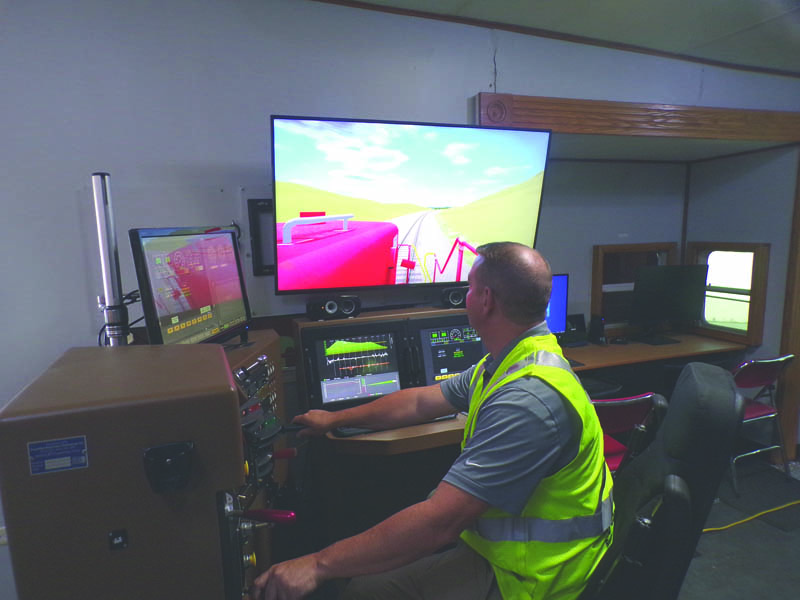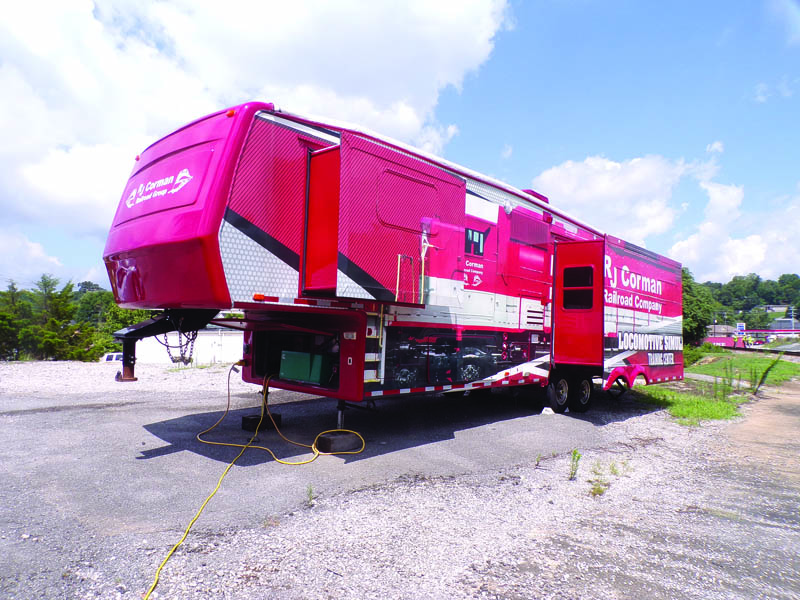How to train an engineer
Railroad uses latest technology
While railroads have been around for a long time, there is a short-line railroad in Clinton that uses the latest electronic technology to train its engineers.
The Knoxville and Cumberland Gap Railroad uses a locomotive simulator that is something like the simulators airlines use to train pilots.
This is the closest experience to actually operating a locomotive and it requires more coordination and concentration than driving an automobile because there are a lot more variable factors. The engineer is surrounded with the actual gauges and levers used in a locomotive. In front of the engineer is a screen which makes it appear like the engineer is looking through the windshield of a locomotive onto the tracks ahead. The simulator operator can create on the screen emergency situations and severe weather conditions and can even simulate an automobile stopped across the tracks.
The engineer can actually feel the vibrations of the engine and the rumbles of the wheels on the tracks as the locomotive brakes and accelerates and hear the actual sounds of the locomotive under such conditions. When slippery track conditions are simulated the engineer can actually feel the wheels slipping on the rails. Not only can different scenarios be projected unto the screen, but different lengths and weights of trains can be simulated.
The length and weight of the train must be taken into consideration in order to keep a steady speed and brake smoothly and safely. In front of the engineer is a computer screen similar to the GPS screen on a car. It shows elevations and grade crossing as the train travels along a section of track.
There are levers for the throttle, the brake and the engine brake which slows down the locomotive the same way that gearing down an automobile engine slows the automobile. These three levers must be operated in coordination to keep the train at an even and safe speed on curves and changing grades. The engineer must be constantly aware of changing conditions. There is even an alarm to keep the engineer from falling asleep. If no controls are moved for a certain period of time, an alarm sounds. The engineer must either move a control or press a large yellow button to reset the alarm.
The locomotive simulator was the project of Jordan Sparr, vice president of safety and compliance for R. J. Corman Railroad Company, which owns the Knoxville and Cumberland Gap Railroad. Sparr says that mobility is what makes his simulator unique. The larger railroads have stationary simulators located in a building and their engineers have to come to the building for training. This trainer can be moved wherever training is needed. The construction of the trainer was a team effort requiring the skills of a number of R.J. Corman personnel. It was built entirely in house using a standard simulator and a trailer already on hand.
The simulator can operate from an outside power source. It also has a generator allowing it to be self contained. Besides Sparr, there are three other people who are trained to operate the simulator. Sparr calls it a very valuable tool that is used not only to train new engineers, but is also used for experienced engineers to do their annual re-qualification, sharpen their skills and shake off bad habits.
The Knoxville and Cumberland Gap Railroad was formed early this year when the R. J. Corman Railroad Company bought two branch lines totaling about 130 miles from Norfolk Southern. One branch runs from Clinton to Clairfield, TN. The other branch runs from Beverly, TN through the Cumberland Gap to Middleboro, KY. The railroad company, headquartered in Nicholasville, KY owns and operates 18 short lines. It also provides emergency services associated with derailments and natural disasters, switching, track construction, track material distribution, signal design/construction and operates a dinner train,
The simulator screen has been set up to project the actual tracks of the Knoxville and Cumberland Railroad. The screen can also be set up to simulate the tracks of other R. J. Corman railroads and generic railroad tracks.
The bright red trailer containing the training simulator had been parked near the Clinton depot since early this year. On Friday, July 22 it was scheduled to be moved to Clearfield, PA to train engineers on R.J. Gorman’s Pennsylvania Line.



